Frontal Pole (RBCM 14679 a, b, c)
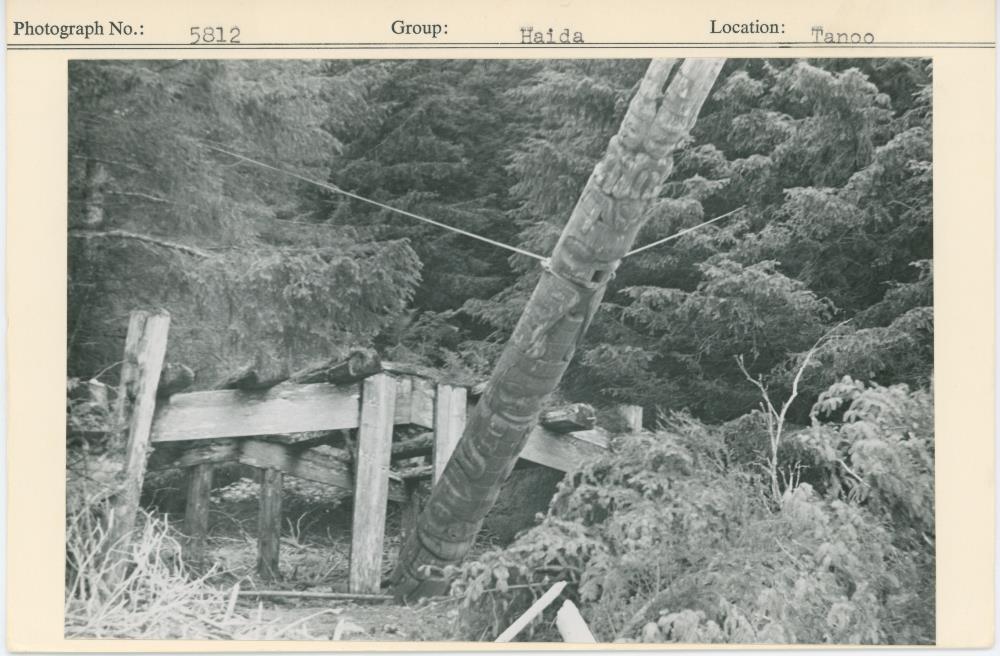
The pole is lowered by ropes, 1954. PN5812.
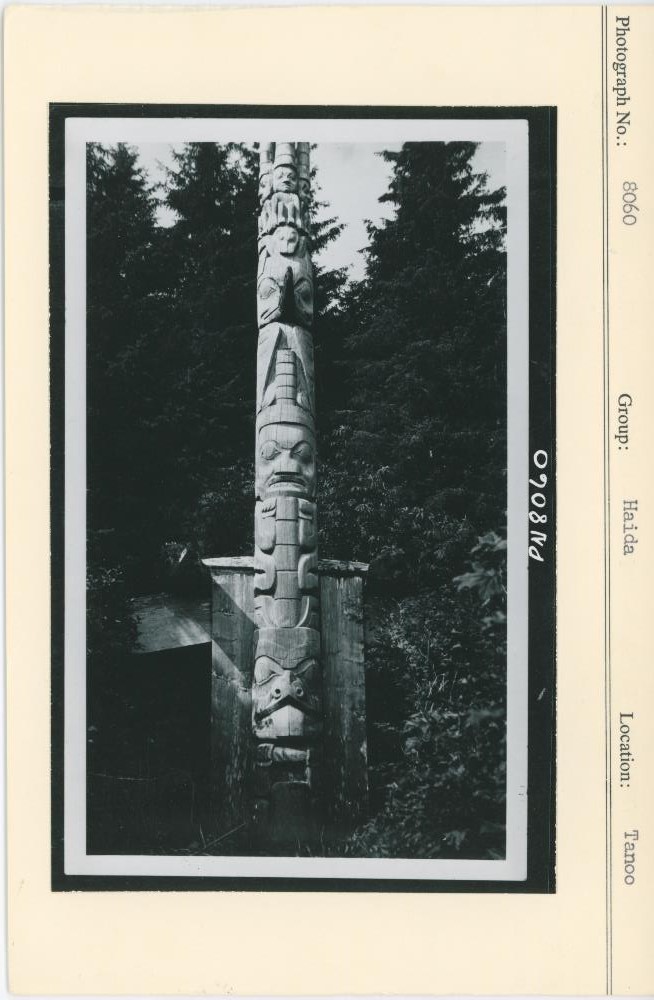
The Beaver pole at T’anuu Llnagaay before 1957. PN 8060.
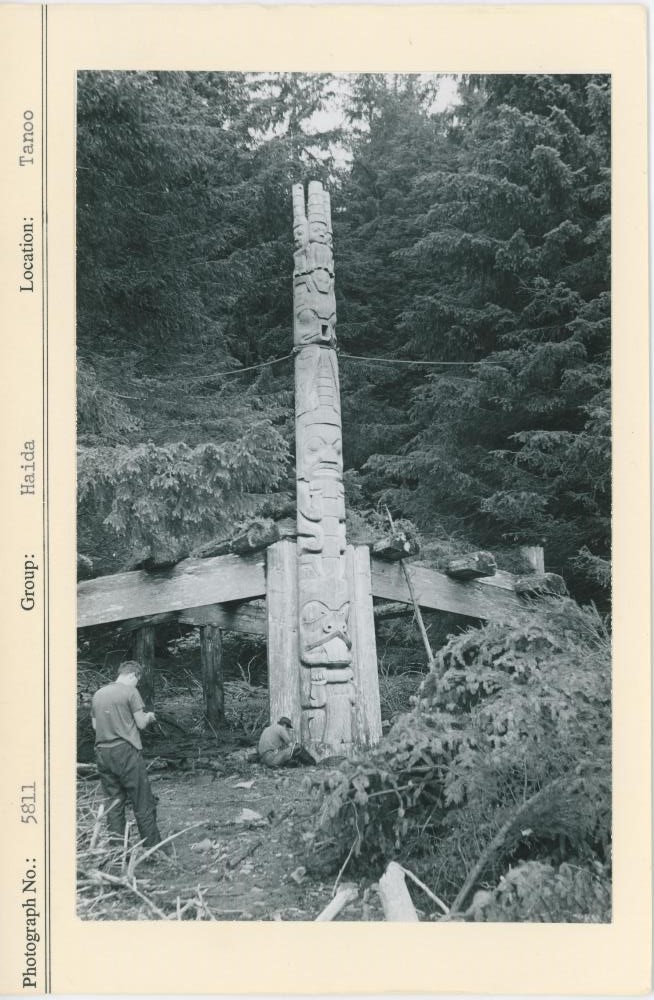
Members of the Totem Pole Preservation Committee prepare to remove the last standing pole fronting a house frame at T’anuu Llnagaay in 1954. PN5811.
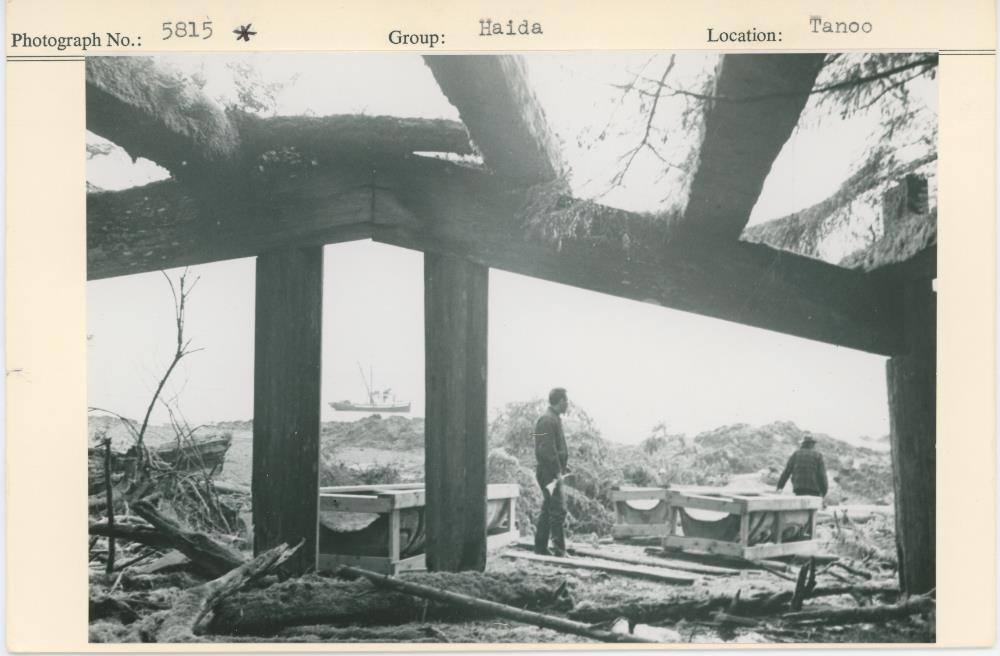
View from inside the house frame during the 1954 pole removal at T’anuu Llnagaay by the Totem Pole Preservation Committee. PN 5815.
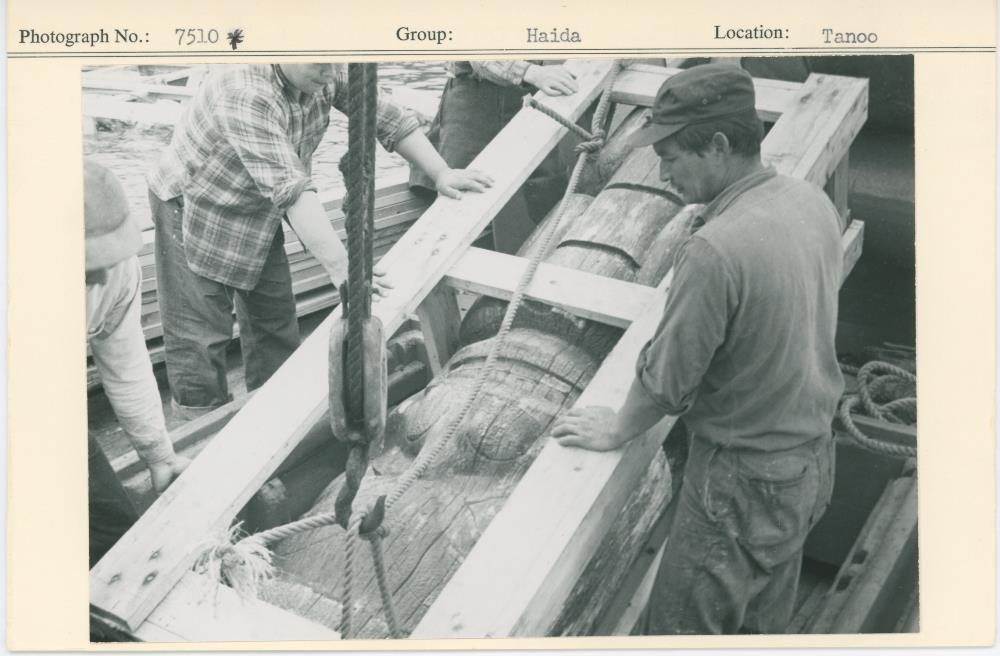
A crated section of the pole being loaded onto a boat for shipment to Victoria. Wilson Duff photograph, 1954. PN 7510.
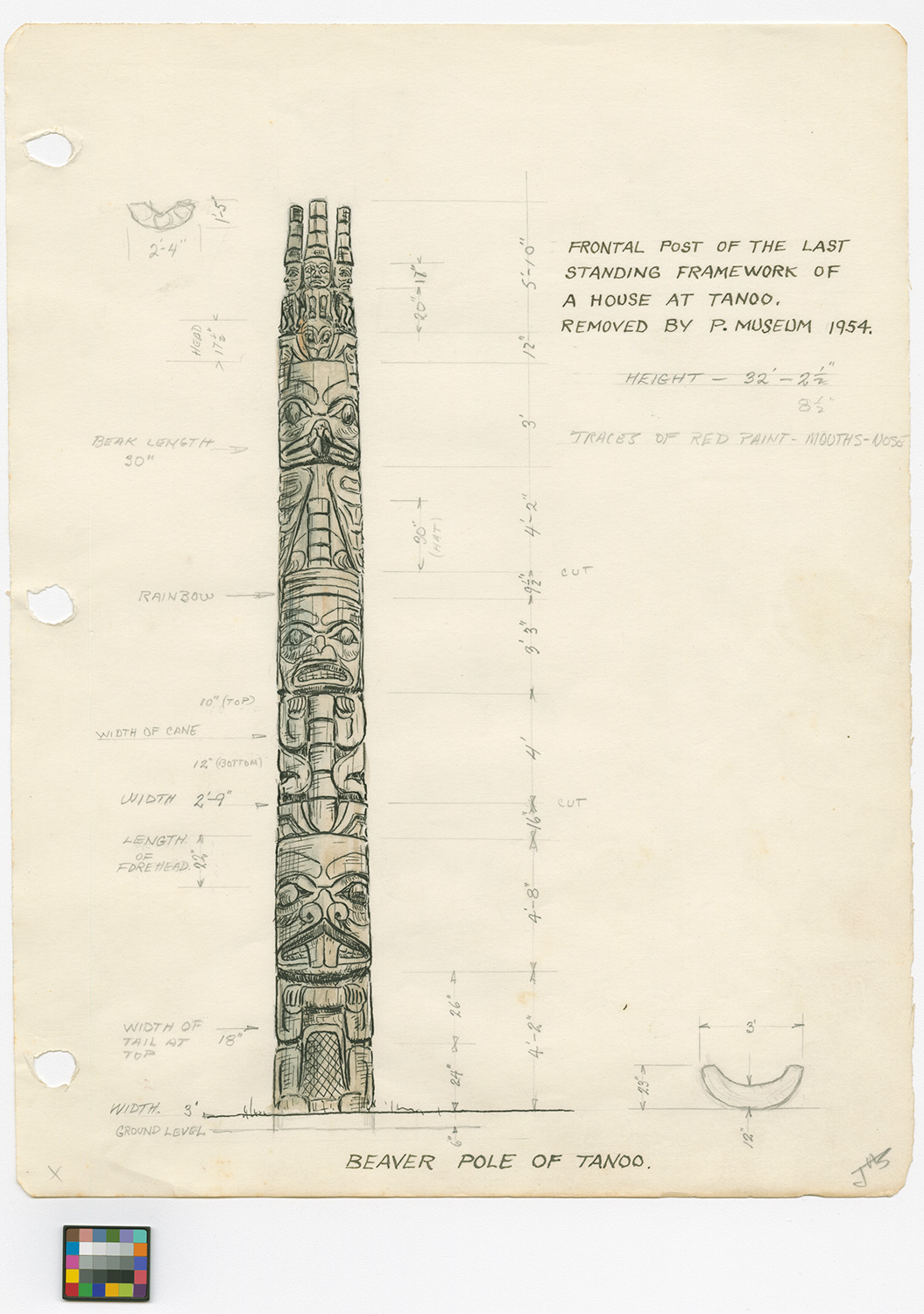
John Smyly’s sketch of the pole, which he called the Beaver Pole of Tanoo.
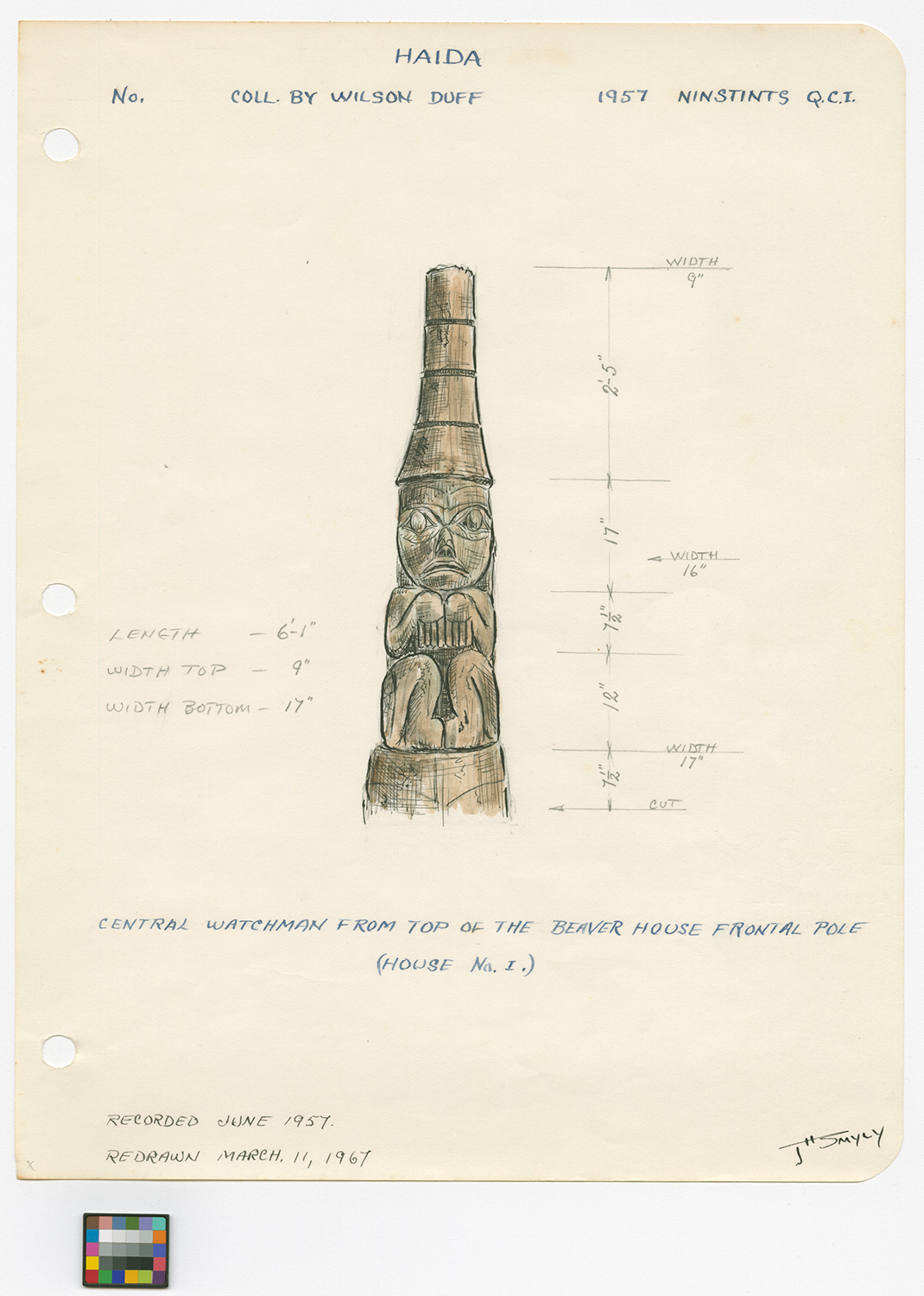
John Smyly’s drawing of the central Watchman at the top of the pole, 1967.
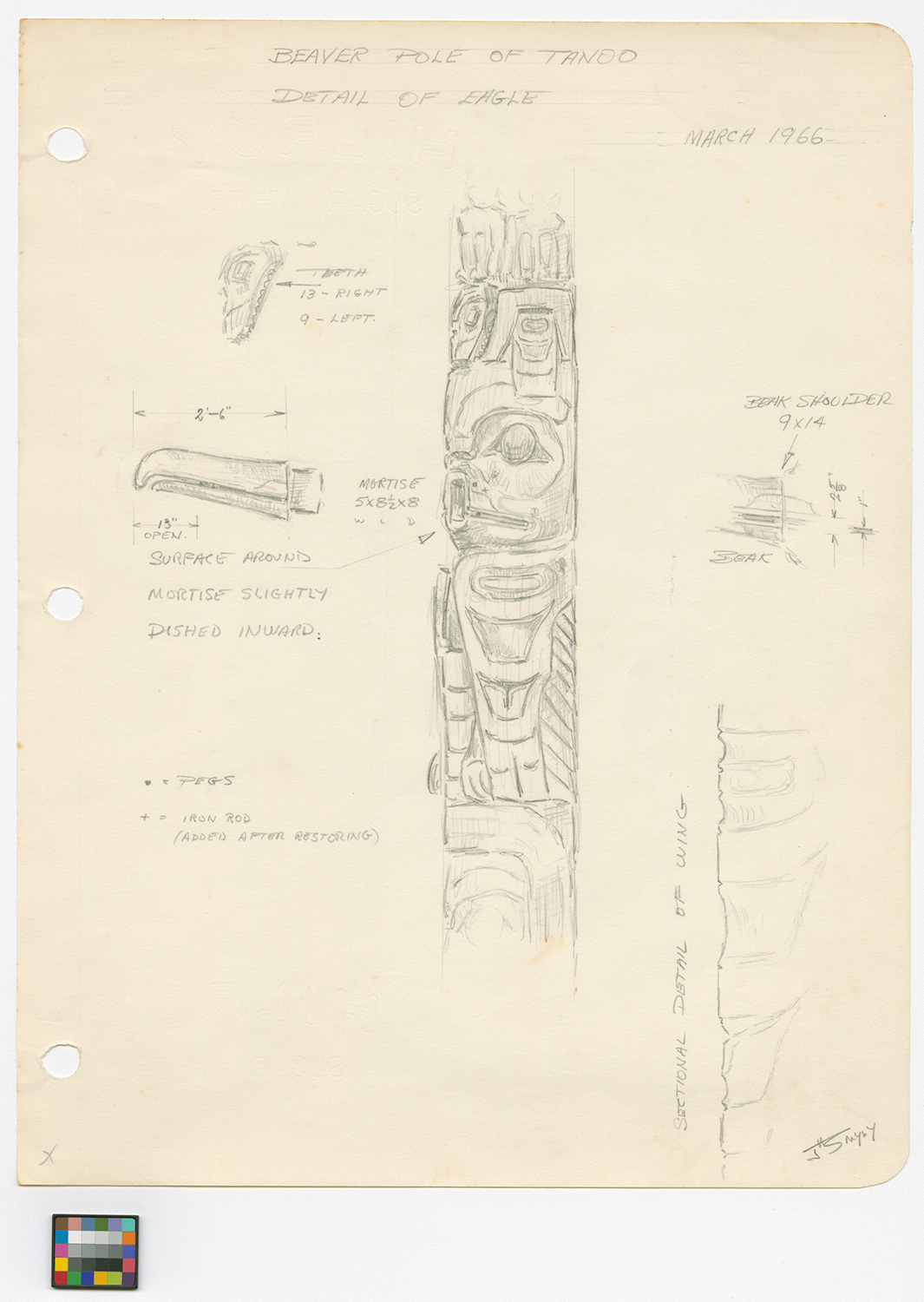
Detail of the Eagle at the top of the pole, drawn by John Smyly in 1966 during its restoration.
This pole stood against the front of the last standing house frame in T’anuu Llnagaay (Eelgrass Town), Haida Gwaii. In 1954 it was removed from the village site by the Totem Pole Preservation Committee, which had been established the previous year by representatives from the British Columbia Provincial Museum (now the Royal BC Museum) and the University of British Columbia. The committee’s purpose was to survey poles in the province and remove those that were decaying and going back to the earth at unoccupied sites, so they could be preserved in museums. While the carvings were preserved, the practice of removing poles from their sites, rather than letting them return to the earth, would not be acceptable today.
The figures on the pole are (from the top): three Watchmen, who look out to sea and warn if enemies approach, Seal, Eagle, a human-like figure with a Rainbow above its head (Rainbow as a crest signifies Supernatural One Upon Whom It Thunders, chief of the supernatural beings in the woods), Beaver. But the pole was cut into three pieces when it was removed from T’anuu Llnagaay and the sections now stand side by side in the First Peoples gallery. The Watchmen, Seal and Eagle are together in one pole section; the other two sections are the figure with Rainbow and the Beaver.
Haida carver Jaalen Edenshaw studied the pole in the museum and used some of the details in the first pole he carved for his own community. “You could see one of the Watchmen’s faces, one whole face of the pole was really weathered . . . so you could tell that the wind was hitting one side really hard. The face of the Watchman was grimacing at bit. In the first pole I did for Old Massett, when I did the Watchman, I created the same thing with the north-facing wind—grimacing a little bit and eyes squinted.”
Do you have a story to share about this item? Add your voice to the community.